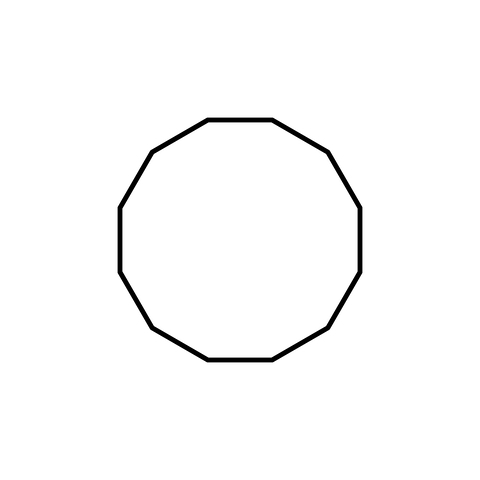
 Data Structure
Data Structure Networking
Networking RDBMS
RDBMS Operating System
Operating System Java
Java MS Excel
MS Excel iOS
iOS HTML
HTML CSS
CSS Android
Android Python
Python C Programming
C Programming C++
C++ C#
C# MongoDB
MongoDB MySQL
MySQL Javascript
Javascript PHP
PHP
- Selected Reading
- UPSC IAS Exams Notes
- Developer's Best Practices
- Questions and Answers
- Effective Resume Writing
- HR Interview Questions
- Computer Glossary
- Who is Who
Dodecagonal Number
What do you understand by the Dodecagonal number?
In order to understand the Dodecagonal number, we first need to understand a dodecagon.
What is a Dodecagon?
A polygon with twelve sides and twelve angles is called a dodecagon. It is a two?dimensional geometric shape that may be created by joining twelve line segments, each of which forms a closed loop when it connects with two other segments. Every side and angle of a normal dodecagon are equal to one another. A dodecagon's interior angles add up to 180(n?2) degrees, where n is the number of sides. As a result, a dodecagon's angles total 1800 degrees.

A figurate number that represents a dodecagon is known as a Dodecagonal number.
We need to calculate the nth Dodecagonal number for a given value of n. The formula to calculate the Dodecagonal number is
D(n) = 5n^2 ? 4n
The series of Decagonal numbers include 0, 1, 12, 33, 64, 105, 156, ?.
Approach
Let's see the step?by?step implementation to calculate the nth Dodecagonal number.
Take the value of n as input
Use the formula discussed above to calculate the nth Dodecagonal number.
Print the value to the console
Code Implementation
Having discussed the theory, let's jump to the code. Here is the C++ code to calculate the nth Decagonal Number for the given value of n
Example
#include <iostream>
using namespace std;
int dodecagonal_number(int n) {
return 5*n*n - 4*n;
}
int main() {
int n = 12;
int result = dodecagonal_number(n);
cout << "The " << n << "th dodecagonal number is " << result << endl;
return 0;
}
Output
The 12th dodecagonal number is 672
Time Complexity: O(1)
Space Complexity: O(1)
Conclusion
In this article, we have covered what is the decagonal number, and the approach along with code implementation to calculate the nth Dodecagonal number. Hope you are able to understand the concept in a better way.

